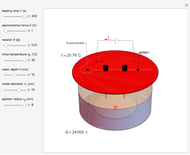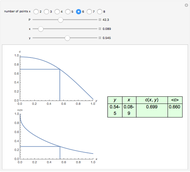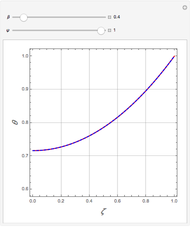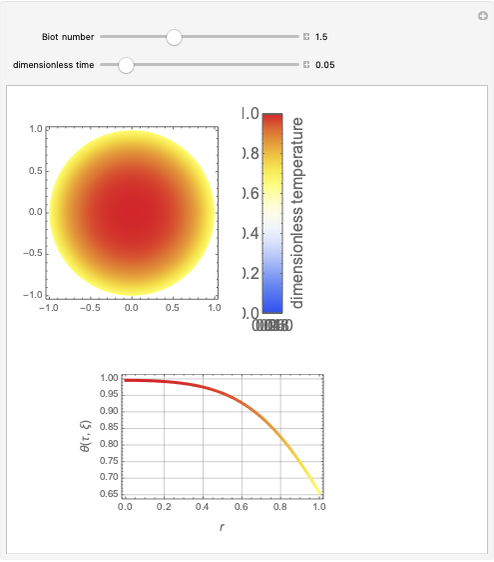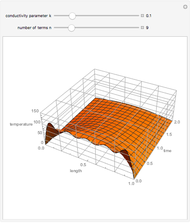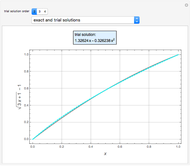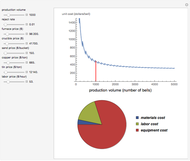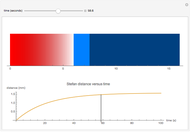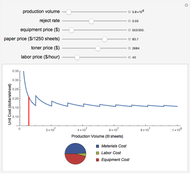First-Order Solution to Glass-Ice Stefan Problem

Requires a Wolfram Notebook System
Interact on desktop, mobile and cloud with the free Wolfram Player or other Wolfram Language products.
A Stefan problem is a type of boundary value problem in which a phase boundary can move with time. A first-order approximation of the Stefan problem is explored for a system consisting of a block of ice (0° C) attached to a 6 mm thick piece of glass pulled from boiling water at 100° C. Here the Stefan problem is simplified by assuming that the temperature of the glass decreases linearly across the glass from 100° C at the left edge to 0° C at the glass-ice interface, as indicated by the color gradient. As time progresses, heat flows from the glass into the water composite at a rate proportional to the temperature gradient of the glass. The heat entering the frozen ice melts a water layer. The thickness of the water is plotted as a function of time.
Contributed by: Sam Shames (May 2012)
(for Jeffrey C. Grossman; assisted by W. Craig Carter)
Open content licensed under CC BY-NC-SA
Snapshots
Details
A first-order approximation is used, assuming the temperature of the glass decreases linearly with distance. This assumption reduces the problem to the following first-order differential equation
 ,
,
where  is the width of the glass and
is the width of the glass and  is the temperature of the left edge of the glass at time
is the temperature of the left edge of the glass at time  . The constants depend on the heat capacity, thermal conductivity, and density of the glass and ice.
. The constants depend on the heat capacity, thermal conductivity, and density of the glass and ice.
Permanent Citation








